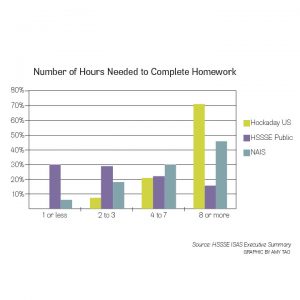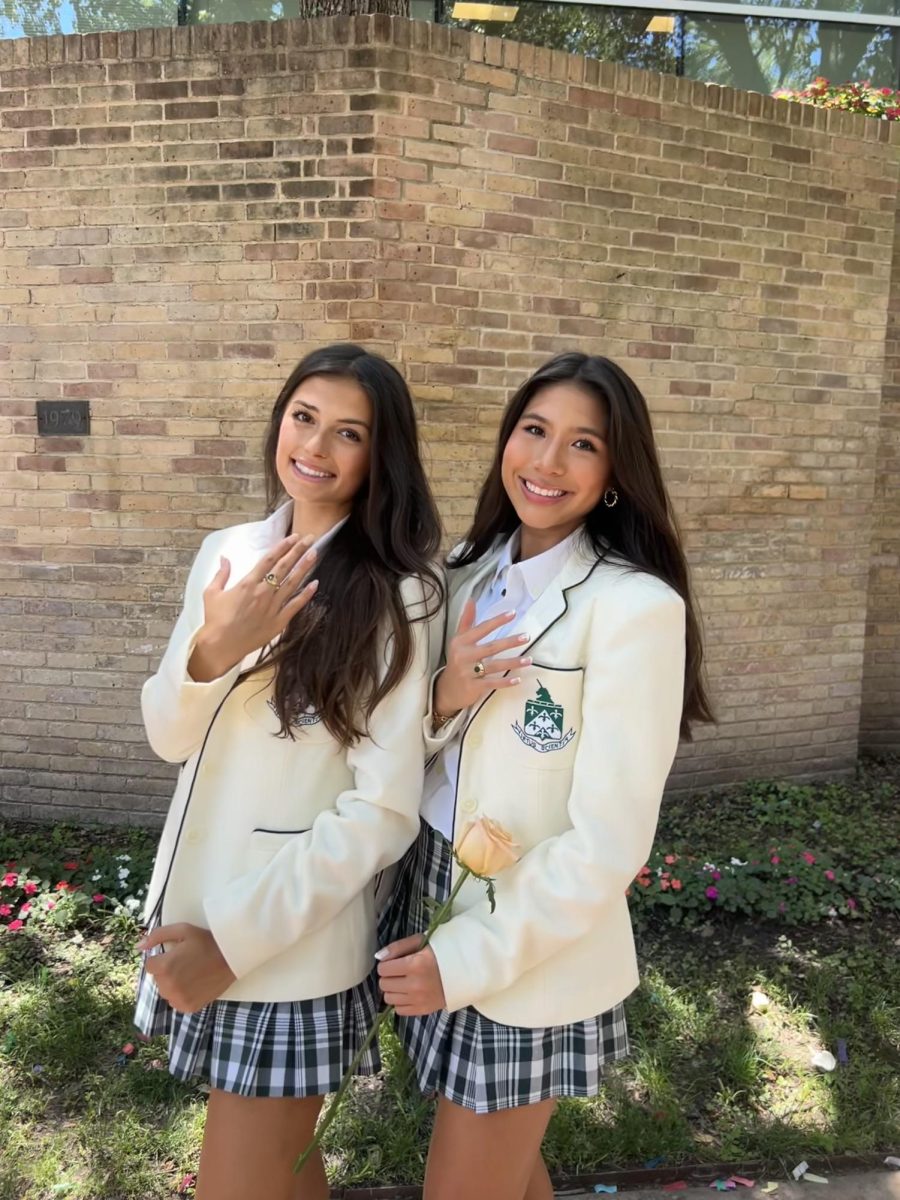
GRAPHIC BY AMY TAO
Administration, Student Council review HSSSE survey results as part of the new “Whole Girl” initiative
The Upper School Student Council reviewed data received from the High School Survey of Student Engagement (HSSSE). All Hockaday Upper Schoolers took the survey last spring, which was the first time that Hockaday participated in the survey.
“After looking at the data, I think that on the whole, girls here are active, engaged and feel connected,” Upper School Head John Ashton said. “However, there are certainly other areas that we want to dig deeper in and know more.”
One point of concern was that, according to the survey, 25 percent of Hockaday Upper Schoolers have sometimes or often considered transferring schools.
“That would be something I would want to know more about,” Eugene McDermott Headmistress Kim Wargo said. “It doesn’t tell us enough to know if that’s a problem because I would say that there is no high school student out there has been 100 percent satisfied with their school 100 percent of the time.”
However, this is on par with the HSSSE public schools where 27 percent of students reported considering transferring schools sometimes or often. Independent schools have similar numbers; 28 percent of students responded the same way.
Though Wargo acknowledged that it is encouraging that Hockaday is not different than most other schools, she still wishes to investigate.
“I think that any school would want all of their students to be happy where they are, not just the majority,” Wargo said.
The Student Council also analyzed the data and noted trends from the survey during November.
Senior Meredith Mihalopoulos, Student Council President, said that some of the data indicated the perfectionist mindset that Hockaday girls tend to have.
According to the survey, 62 percent of Hockaday Upper School students strongly agree with the statement “I am motivated by my desire to get good grades.”
In contrast, only 52 percent of HSSSE school students and 35 percent of NAIS school students strongly agree with that statement.
“I think that most people would agree—and I definitely can contest to this—that at Hockaday, although the students are very high-achieving, they try to excel at everything, and there is a lot of stressed involved with that,” Mihalopoulos said.
The Student Council hopes to change that mindset at Hockaday.
“I think if we can alleviate the stress and alleviate that idea of being perfect and instead emphasize learning and trying to be healthier and happier, we can build a better culture at Hockaday,” Mihalopoulos said. “Finding the balance between excellence and perfection is something we all have to do.”
In order to spark discussion to find solutions to these concerns, the Student Council coupled together advisories within each grade to discuss questions that stemmed from the data collected. From these discussions, which are set to take place on Jan. 21, the Student Council hopes to understand better why there was dissatisfaction among some Hockaday students. “We thought that this was a way to initiate healthy conversation,” Mihalopoulos said.
“What I hope ultimately comes out of the discussion groups, and what I hope the student body feels, is real ownership in being a part of helping construct an environment that is healthy for the girls,” Ashton added.
Through the discussion, Wargo hopes to see change in the culture.
“I think a lot of change that happens at school comes from asking the right questions and creating a culture where people are willing to ask questions,” Wargo said. “Even if we don’t change anything, I think we’ll see change out of the fact that people are talking about it.”
The discussion groups will be only a small part of the Student Council’s new Whole Girl Initiative, which promotes the idea of a “whole” girl who is healthy, happy and leading a balanced lifestyle.
“I’m really looking to this partnership with the Student Council and our teachers and our administration to come up with some ideas about ‘Whole Girl,’” Wargo said.
The Student Council will work closely with the administration and students to strategize how to make the idea of a “whole girl” into a reality.
“I, and I think I can speak for most of the Student Council, am excited to be a part of this initiative and leave this legacy,” Mihalopoulos said. “It’s just something really cool that we can be a part of, and once the change happens, we can look back on and be really thankful for it and be really proud that we were the ones to start it.”
The 135-question survey was given to 27,048 students in 25 states. Hockaday was provided with comparison data from spring 2013 for two groups: HSSSE public schools (including Charter, Alternative and Magnet schools) and National Association of Independent Schools schools (both residential and non-residential private and independent schools).
In order to track improvement in the following years, Hockaday has committed to taking this survey for the next three years. “One of the real things we want to see is what the trends are over time,” Wargo said. “We’re really taking a look at the data to see what we can learn from it.”
The administration hopes that the student-led initiative can help identify areas that Hockaday should continue and other areas that Hockaday could strengthen, and Ashton said that the HSSSE and the subsequent discussion will help with that.
“We want to be the best school for girls, and not to be the best in just achievement, but we want to be the best, most healthy environment for girls to develop into young women who will lead meaningful lives,” he said. “That, to me, is our mission.”
– Courtney Le







